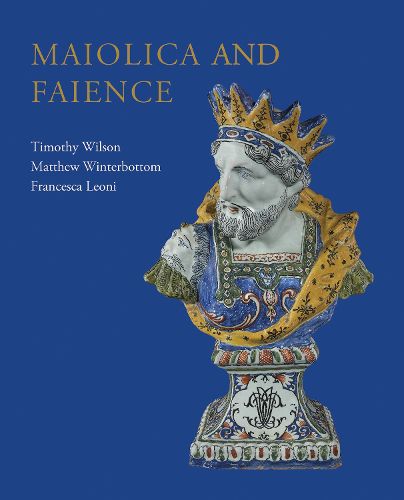Readings Newsletter
Become a Readings Member to make your shopping experience even easier.
Sign in or sign up for free!
You’re not far away from qualifying for FREE standard shipping within Australia
You’ve qualified for FREE standard shipping within Australia
The cart is loading…






The Ashmolean Museum catalogue Italian Maiolica and Europe (2017) included a range of works from Spain, France, the Netherlands, Germany, England, and Mexico, as well as Italy, to illustrate the rich history of European tin-glazed pottery. Since then, the Ashmolean has expanded its holdings of tin-glazed and related earthenwares to consolidate its position as one of the world's most important and wide-ranging collections. Among the acquisitions described here is the only known piece of Italian maiolica made for a Tudor Englishman, a plate made for Humphrey Dethick, who caused a nationwide stir in 1602 by an apparent attempt to assassinate King James VI of Scotland. The bequest from Sidney Knafel of New York has transformed the Museum's holdings of French faience; while important 16th-century maiolica comes from the collection of the late Airlie Holden-Hindley. Among the lustrewares included are fin-de-siecle pieces by Clement Massier and work by some of the world's supreme contemporary masters of the technique.
$9.00 standard shipping within Australia
FREE standard shipping within Australia for orders over $100.00
Express & International shipping calculated at checkout
The Ashmolean Museum catalogue Italian Maiolica and Europe (2017) included a range of works from Spain, France, the Netherlands, Germany, England, and Mexico, as well as Italy, to illustrate the rich history of European tin-glazed pottery. Since then, the Ashmolean has expanded its holdings of tin-glazed and related earthenwares to consolidate its position as one of the world's most important and wide-ranging collections. Among the acquisitions described here is the only known piece of Italian maiolica made for a Tudor Englishman, a plate made for Humphrey Dethick, who caused a nationwide stir in 1602 by an apparent attempt to assassinate King James VI of Scotland. The bequest from Sidney Knafel of New York has transformed the Museum's holdings of French faience; while important 16th-century maiolica comes from the collection of the late Airlie Holden-Hindley. Among the lustrewares included are fin-de-siecle pieces by Clement Massier and work by some of the world's supreme contemporary masters of the technique.